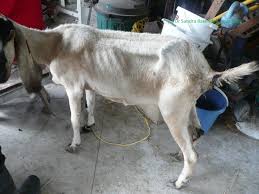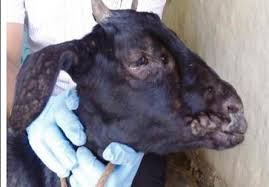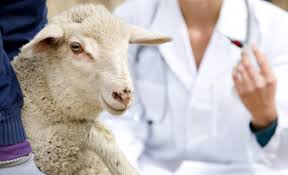In this article, the focus will be on the diseases and parasites that affect sheep and goats. Since many diseases and parasites are common to both species, they will be addressed together.
Losses due to diseases and parasites represent a significant economic burden and one of the main constraints to the development of sheep and goat farming.
Disease incidence tends to increase when nutrition is poor, leading to reduced resistance. Additionally, inadequate sanitation and hygiene negatively impact the health and performance of small ruminants. Under traditional village husbandry systems, 25-50% of lambs and kids are lost. Among adult animals, annual mortality rates range from 14-20%.
Classification of Diseases in Sheep and Goats
Diseases affecting sheep and goats can be classified into three categories:
1. Infectious Diseases: Infectious diseases include Pest de Petits Ruminants (PPR), contagious caprine pleuropneumonia, and hemorrhagic septicaemia.
2. Non-Infectious Diseases: Non-infectious diseases refer to various metabolic disorders.
3. Parasites: Parasites, particularly internal ones like helminths, significantly affect sheep and goats.
Read Also: Sheep gene insights could help farmers breed healthier animals
Some Common Diseases and Parasites in Sheep and Goats

1. Pest de Petits Ruminants (PPR)
PPR, a major disease affecting all small ruminants, is prevalent throughout tropical Africa. Goats are more severely affected than sheep. PPR is caused by a virus similar to the rinderpest virus, and signs include fever, watery eyes, nasal discharge, necrotic lesions on the buccal mucosa, and diarrhea.
Treatment: Systemic antibiotics, notably long-acting terramycin.
2. Enterotoxaemia
Enterotoxaemia is a serious disease of sheep and goats caused by the absorption of a toxin produced by a bacterium that normally resides in the intestine. The bacterium multiplies rapidly and produces large amounts of toxin when digestive upset occurs. The disease is associated with animals in good condition, particularly those grazing lush grass or green crops.
i. Signs: Abdominal pain, severe diarrhea, dullness, and listlessness. Recovery is common in animals.
ii. Prevention: Avoid sudden changes in feed without an adaptation period.
iii. Control: A vaccine is available to protect susceptible animals.
3. External Parasite Infestations
Mange is common but typically does not cause major problems. Flies and other pests are often found on sheep and goats, but they do not cause serious disorders unless their numbers become excessive.
Read Also: 17 Medicinal Health Benefits Of Mucuna pruriens (Monkey Tamarind)
i. Prevention: Vaccinate young animals and, if possible, vaccinate the entire flock annually with the tissue vaccine used for rinderpest prevention.
4. Anthrax

Anthrax is an acute septicemia caused by the highly resistant bacterium Bacillus anthracis. Animals contract the disease through soil contaminated by the carcasses of infected animals. The bacteria survive in the soil as spores, which are ingested by animals. Anthrax is usually fatal, and death occurs within 24 hours. Recovery is rare.
i. Diagnosis: The carcass and organs of a dead animal are blackish, with a particularly swollen and blackened spleen. A thick blackish liquid is released when the spleen is cut. Anthrax can be transmitted to humans, so precautions should be taken during post-mortem.
ii. Control: Destroy the carcasses, including the skin, and bury them deep in quicklime or burn them.
iii. Prevention: Vaccinate all animals, preferably before the rainy season, using the recommended dose of the vaccine administered subcutaneously.
5. Ticks
Ticks are a serious external parasite because, in addition to causing irritation and anemia, they transmit a wide range of diseases that are difficult to diagnose and require laboratory testing.
i. Control: Regular dipping or spraying with an acaricide can control tick infestations.
6. Foot-Rot: Foot-rot is a common and serious disease affecting flocks. It is caused by the growth of certain fungi in the hooves, with other environmental organisms contributing to the infection. The causative organisms thrive in wet conditions but become dormant during dry seasons.
i. Signs:Lameness is the first sign. Upon examination, the “frog” and coronet are swollen and painful. There may be discharge between the hooves. If untreated, the condition can worsen, potentially leading to death.
i. Prevention: Avoid wet, muddy, or marshy pastures. Ensure housing areas are well-drained.
ii. Control:
Use a footbath with a solution of 55% copper sulfate and an antiseptic. Clean affected areas and remove necrosed parts. Isolate affected animals in a dry area for several days.
7. Mastitis
Mastitis is the infection of one or both udders by microorganisms typically found in the environment. While mastitis usually does not threaten the life of the animal, the affected udder is often lost after recovery, which impairs the ewe’s productive capacity.
i. Signs: The affected udder is red and painful. The milk may turn into a watery, purulent, or blood-stained liquid. Lambs and kids stop sucking from the affected udder, and an abscess may form with a mixture of milk, pus, and blood.
ii. Prevention: Maintain cleanliness in sheep and goat housing and remove sharp objects that could injure the udder.
iii. Control: Infuse an antibiotic-based preparation into the udder after it has been emptied. Use systemic antibiotics.
8. Parasite Gastro-Enteritis
Gastro-enteritis is caused by a heavy infestation of parasitic worms in the abomasum and intestines. Kids are particularly vulnerable, while adults are generally resistant. The disease leads to progressive weight loss, which may result in emaciation. Appetite typically remains good until later stages.
i. Prevention: Avoid restricted grazing, as it leads to a buildup of infective larvae. Rest pastures for six weeks to ensure a reduction in larval concentration.
ii. Control: Use anthelmintics regularly.
Do you have any questions, suggestions, or contributions? If so, please feel free to use the comment box below to share your thoughts. We also encourage you to kindly share this information with others who might benefit from it. Since we can’t reach everyone at once, we truly appreciate your help in spreading the word. Thank you so much for your support and for sharing!

